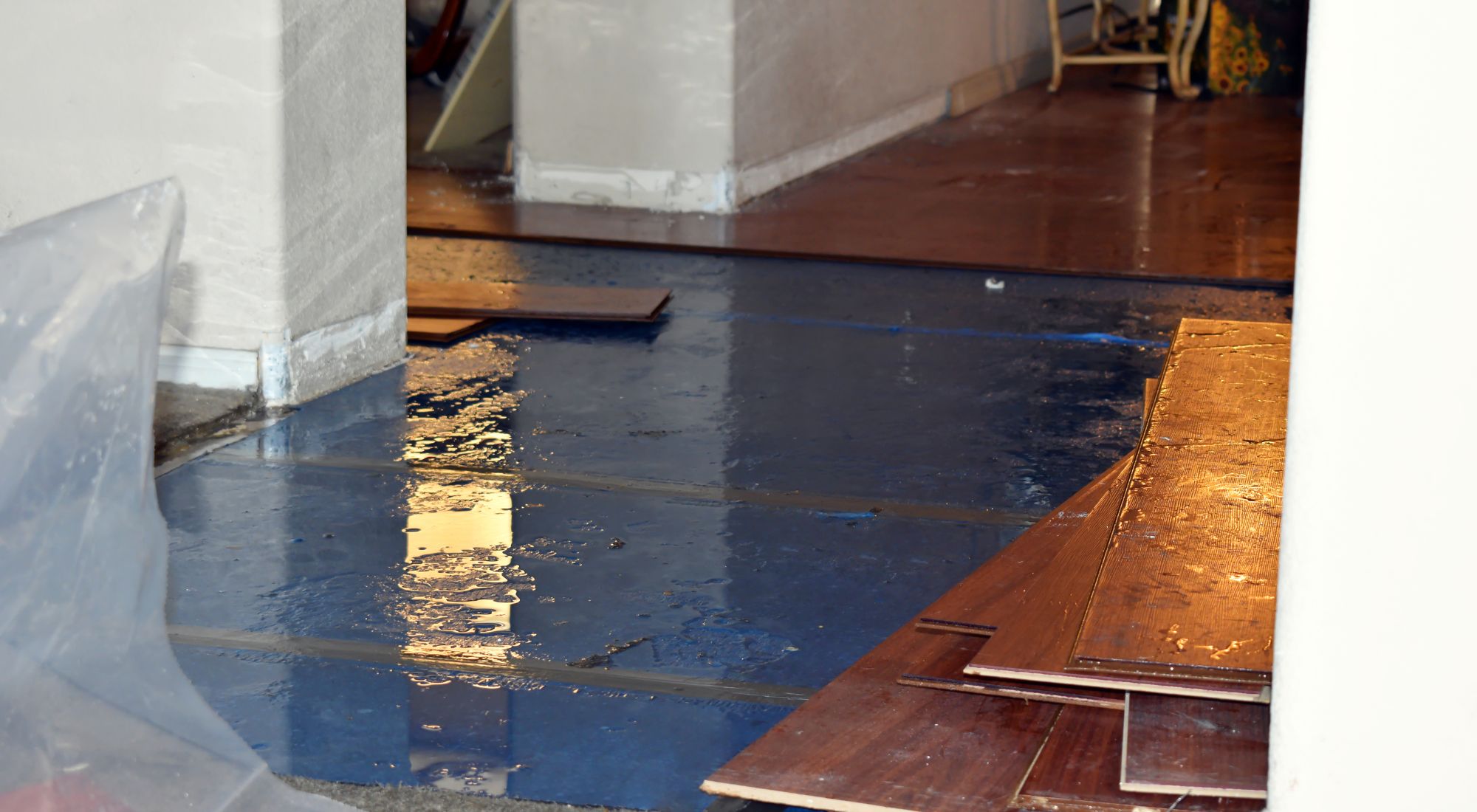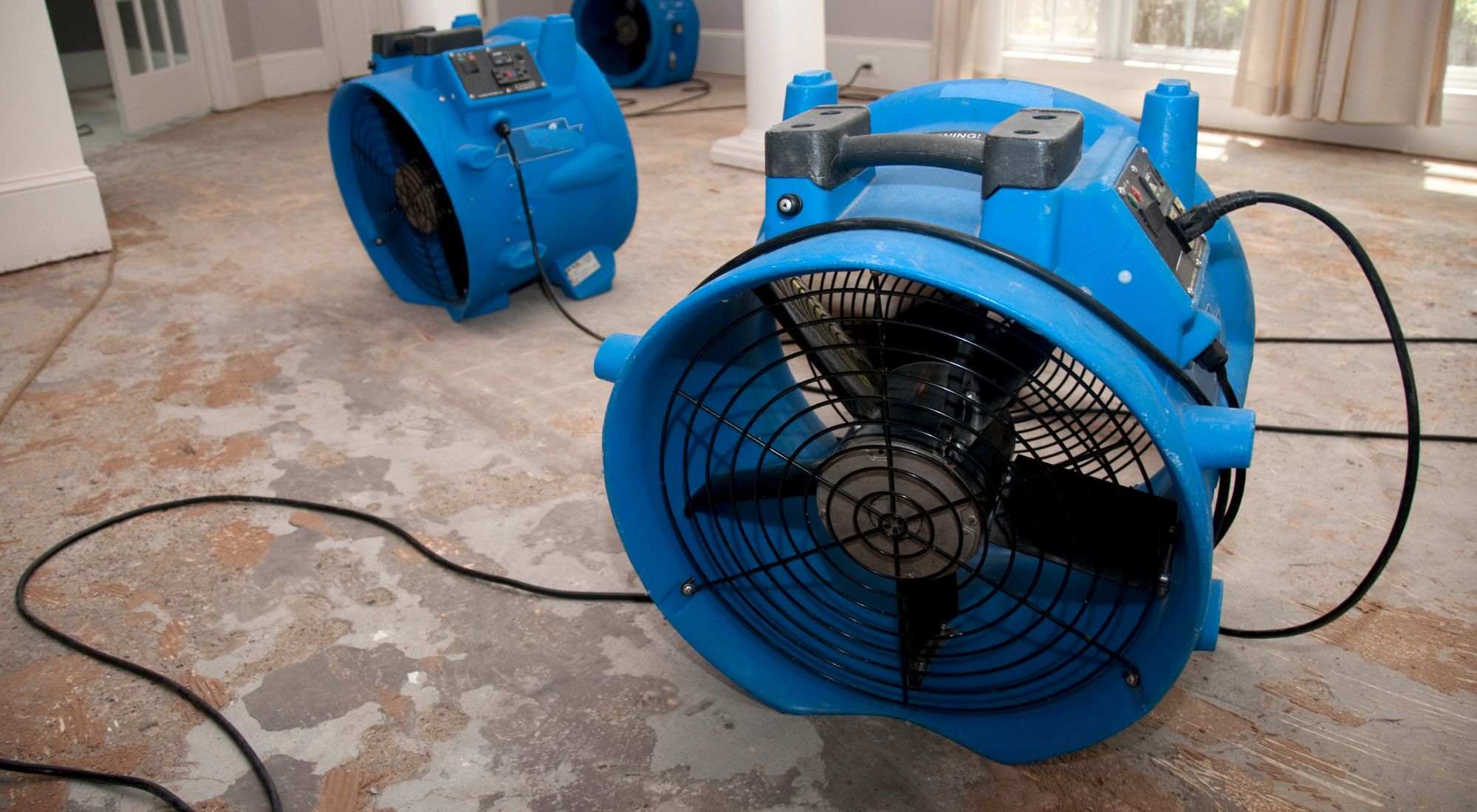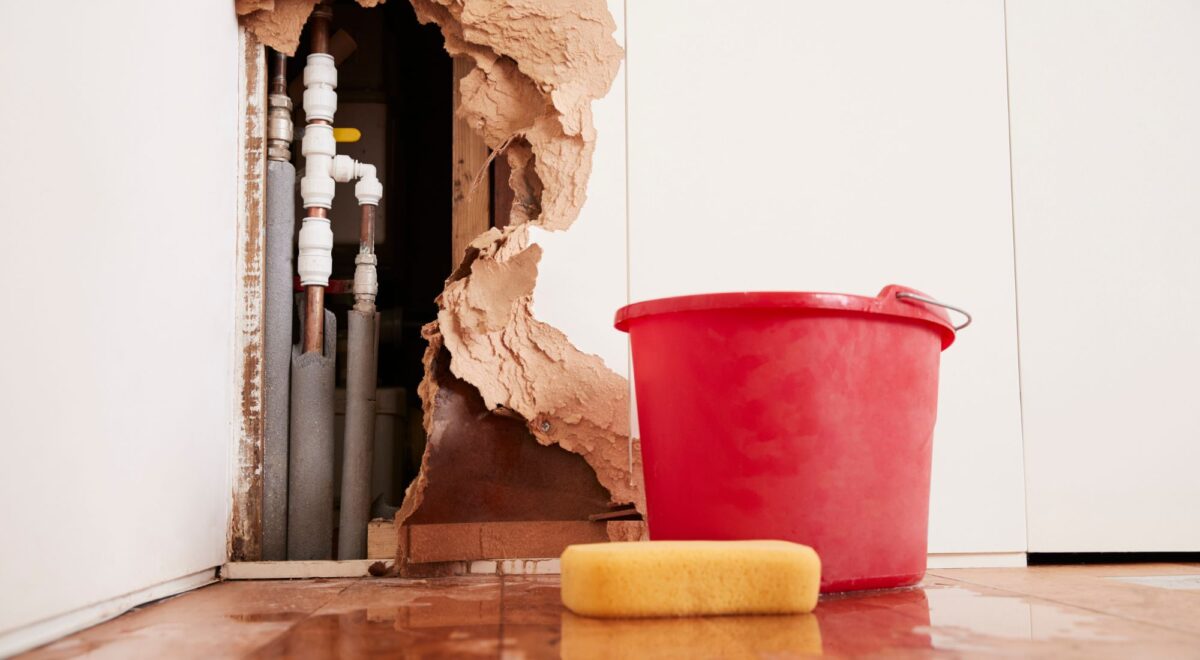How seriously should you take water damage in your home? Is it just a matter of sopping it up with towels, letting it air dry, and going on your merry way? Or do you wring your hands about it, wondering how soon your house is going to collapse?
A happy medium between these two extremes is the most beneficial place to be. Water damage should not be so easily swept aside, but it is not necessarily a death sentence for your home either.
Let Pure Environmental explain the types of water damage and steps you can take to resolve them. We also discuss here what can happen if water damage is not resolved.
Table of Contents
- The 3 Categories of Water Damage
- 7 Steps You Should Take After Experiencing Water Damage
- What Are the Risks of Unresolved Home Water Damage?
- Pure Environmental: The Leading All-In-One Home Water Damage Repair Professionals in the Portland and Tacoma Metro Areas
The 3 Categories of Water Damage
The following categories indicate the level of contamination in the water, which depends on its source and what it has come in contact with.
It’s important to know these categories to ensure you’re handling the situation with minimal exposure to harmful bacteria in the water. The category of water damage may also influence the outcome of an insurance claim.

Category 1: Clean Water
This water originates from a sanitary water source. As such, it does not pose a substantial risk if touched, ingested, or inhaled. Frequently, items affected by clean water can be dried and salvaged. Clean water sources include:
- Water supply lines
- Rainwater
- Toilet tanks
- Melting snow and ice
- Overflowing tubs or sinks
Category 2: Grey Water
Grey water contains significant contamination and may cause sickness or discomfort if consumed or made contact with. Restoration after grey water damage is more extensive, as items must be disinfected. Sources of grey water include:
- Overflow or leakage of dishwasher or washer
- Broken aquariums or punctured water beds
- Hydrostatic pressure seepage
- Sprinkler water for fire protection
- Sump pump collapse
Category 3: Black Water
Black water is grossly contaminated and may contain toxic, disease-causing, or otherwise harmful agents with the potential to cause severely adverse effects if made contact with or consumed. Many items affected by black water must be disposed of including cushions, drywall, hardwood flooring, insulation, and carpet.
Black water sources include:
- Sewage
- Seawater
- Rising water from rivers and streams
- Wind-driven rain from tropical storms
- Backflows from waste lines
- Category 2 water that has sat too long
7 Steps You Should Take After Experiencing Water Damage in Your Home
Home water damage repair can be broken down into the following mitigation tasks:
- Stop the flow of water, remove water, and dry the area so the damage doesn’t spread. This step does not involve repairing or replacing damaged items and structures but ensures that the cause of the water flow is resolved.
- Clean, dry, and sanitize materials that can be salvaged and dispose of those that can’t. This can be part of mitigation
- Repair or replace damaged items and structures to restore the property to its original condition. Prevent mold growth by conducting moisture tests. Indoor humidity levels should stay between 40-60% to prevent respiratory discomfort and mold growth. This last section should be part of mitigation
It is not usually cost-effective to tackle water damage restoration on your own because undetectable damage can lead to more costly repairs in the future. Pure Environmental can assist you with water damage restoration by performing each of these tasks. Contact us today for guidance through what can be a very stressful process.
Step #1: Locate the Source of the Water
The source of the water can help you determine whether it is sanitary. If you are dealing with grey or black water and you cannot stop the flow without touching the water, prioritize your safety by consulting a professional.
Depending on where the water is coming from, you may be able to mitigate the problem yourself. For instance, if you identify a broken pipe as the source, you can simply turn off the water source until the pipe can be repaired. Or you may need to apply a tarp to your roof. However, water seeping in from cracks in your home’s foundation must be addressed professionally.
Common sources of undesirable water flow are:
- Leaking or burst pipes
- Clogged gutters or drains
- Sump pumps
- Natural disasters
- Appliance failures
- Leaky roofs
- Sewage
- HVAC systems
Signs of water damage may help you locate the source. These include:
- Rust on the water heater
- Water rings on ceilings or walls
- Soft or sagging spots on the floor
- Buckled or spongy flooring
- Musty odor
- Water marks or mineral deposits on concrete
Step #2: Turn Off Your Power and Main Water Line
Turn off any breakers serving appliances and outlets in the affected area as well as the main water valve. The water valve may be located in the basement, crawlspace, mechanical room near the water heater, under the kitchen sink, in the yard, or along an exterior wall.
If you cannot safely reach the breakers or water valve because of standing water, do not try to do so. Call your utility company to send an electrician who will inspect the wiring and affected appliances to determine their safety before use.

Step #3: Remove Wet Items and Start the Drying Process
Remove wet items as quickly as is safely possible. Decide which can be salvaged and which must be discarded. Consult an electrician for guidance on whether large appliances can be safely used after sustaining water damage.
Depending on the degree of flooding and how quickly you can act, you might be able to conduct your own repairs. Ventilate the space as well as possible by opening windows and doors and plugging in fans and dehumidifiers.
Mold growth can begin as soon as 24 hours after the water has been present, so this drying process should begin immediately. Shop vacs can be helpful for this, but first, check the filter to ensure it has no signs of water damage.
Step #4: Contact a Home Water Damage Repair Professional
You probably don’t have a submersible pump and an industrial-quality vacuum lying around. A professional, however, has the equipment and knowledge needed to pump and dry out moisture efficiently and at the right pace to preserve the integrity of the affected structure.
Whether you dry the affected area yourself or have it done by a professional, it is safest to consult a mold specialist for a thorough inspection. This is to ensure that mold isn’t growing somewhere unbeknownst to you. A specialist’s assessment is critical if moisture has remained for more than 24 hours.
When moisture is allowed to remain for any length of time, the main issue is the swelling of materials. MDF that gets wet for more than a few minutes already needs to be replaced, other materials such as hardwood may swell and cup or even break.
Pure Environmental provides both water damage restoration and inspections for detecting the extent of mold growth.
Step #5: Call Your Insurance Company
It is probably best to call a water damage repair professional before filing a claim with your insurance company. They can help you determine whether the damage is extensive enough to warrant that.
After assessing the damage, Pure Environmental may advise you to file a claim. Be sure to carefully document the damage by taking pictures before, during, and after steps are taken to mitigate, remedy, and restore damage. Include the value of all items affected.
Step #6: Clean the Area
After mitigation has been performed, begin the remediation process by sanitizing the area. Exercise caution around grey or black water and items they have come in contact with by wearing proper personal protective equipment, such as gloves and a face mask. Unsanitary water contains bacteria, endotoxins, and microbes that may lead to infections, illnesses, or even death.
Pure Environmental uses PurAyr technology to sanitize airborne and embedded contaminants left behind by contact with unsanitary water (or sanitary water that’s been sitting too long).

Step #7: Restore, Rebuild, and Follow Up
Before you begin to restore your space and rebuild what you lost, follow up with a mold specialist to ensure the water damage hasn’t caused any mold.
Depending on the extent of damage, you may need to remodel extensively, replacing drywall, flooring, and ruined possessions. Pure Environmental helps with restoration as well as mitigation and remediation. We can help you ensure that the issue that caused the leak or flood does not happen again.
What Are the Risks of Unresolved Home Water Damage?
Water damage, if not addressed promptly, can cause serious damage in many ways. Potential hazards include:
- Health: Possible hazardous contaminants left behind from black water include bacteria or fungi, toxic or unsanitary waste, and harmful chemicals. Your carpets and drywall will not dry on their own. Pathogenic materials remain even after standing water has been removed and can cause serious health issues by allowing the growth of mold and mildew, which can attract insects, bugs, and fungi.
- Electrical: Contact with fuse boxes, electrical wiring, or outlets exposed to water can be lethal. Consult an electrician to inspect and repair such items.
- Structural: Any remaining dampness will be absorbed by wood making up your walls or floors. This creates an ideal environment for mold growth and diminishes the structural integrity of the home.
- Home value: Untreated water damage lowers the resale value of your home and can be a deterrent for potential buyers.
Pure Environmental: The Leading All-In-One Home Water Damage Repair Professionals in the Portland and Tacoma Metro Areas
If any part of your home has been damaged by water and you want assurance that the repair process is handled thoroughly and professionally, contact Pure Environmental. We specialize in all of the components necessary to restore your home to its original state.
Our water damage restoration services include mitigation of any incident causing the damage, such as burst pipes, sitting water, leaks, etc. We also restore the affected area by remodeling if necessary and ensuring a safe, clean environment through our mold remediation services.
Keep us in mind if you ever need any of our other services, which include:
- Removal of odors and fine particulate matter
- Fire restoration
- Tear gas clean-up
- Heat treatment for bedbugs, beetles, and moths
- Attic and crawlspace clean-up
We will also work with your insurance company to advocate for you by attesting to the necessity of various repairs.
We accomplish all this by way of an environmentally friendly approach using innovative technologies with no harmful byproducts. Check out our 5-star Google reviews to confirm our excellent customer service and skillful work. Call us for a free estimate to address your water damage repair needs.
Recent posts
- Pros and Cons of Heat Treatment for Bed Bugs: Things To Consider When Reviewing Your Options for Remediation
- How To Get Rid of Pet Odor in Your House
- Clearing the Air: How To Clean Walls From Cigarette Smoke
- Deodorizing Your Living Space: How To Get Rid of a Musty Smell in Your House
- How Do You Get Rid of Mold in Your Attic? Tips from the Professionals
Recent Posts
- Pros and Cons of Heat Treatment for Bed Bugs: Things To Consider When Reviewing Your Options for Remediation
- How To Get Rid of Pet Odor in Your House
- Clearing the Air: How To Clean Walls From Cigarette Smoke
- Deodorizing Your Living Space: How To Get Rid of a Musty Smell in Your House
- How Do You Get Rid of Mold in Your Attic? Tips from the Professionals
